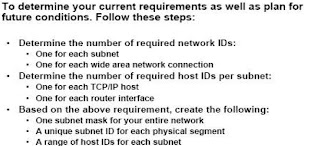Difference between Router-Switch-Hub-Bridge
Hubs work at the Physical layer. A hub is a totally dumb device. If it gets a data signal, it just forwards the signal to all devices. It cannot do any kind of filtering or addressing. Performance is not so good because a hub can't establish a direct connection from one computer to another.
If a switch gets a data packet, it will try and find the destination device, and then send it to that device only, i.e. it establishes a point-to-point connection between the sending and receiving devices. But the devices must be on the same subnet. A switch won’t send data packet to computers on different subnets. A switch breaks up collision domains but it does not break up broadcast domains unless we use VLANs.
Like Switches, Bridges operate at the Data Link layer and filter packets based on the MAC address. Generally bridges are used to extend the distance capabilities of the network while minimizing overall traffic, and switches are used mainly for their filtering capabilities to create multiple VLANs. Bridges have less number of ports than switches.
Routers work at the Network layer and operate on the IP Address. Router only gets a data packet if the destination computer isn’t on the same subnet or LAN. The router then finds the location of the destination device and then sends it in the right direction. A router breaks up broadcast domains.


Comments
Post a Comment